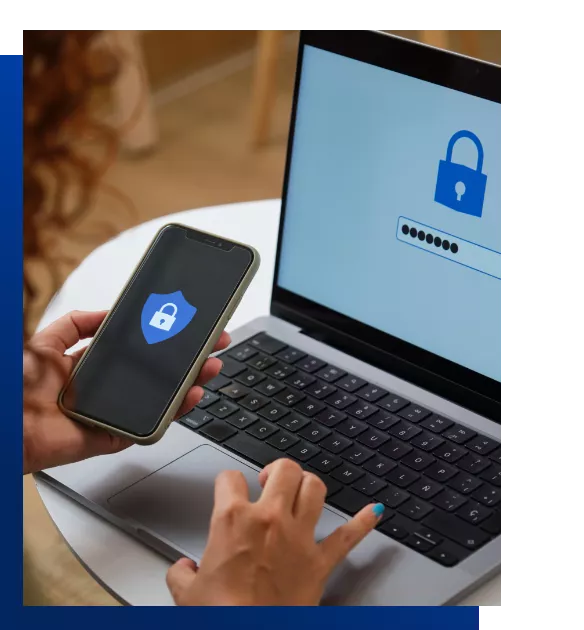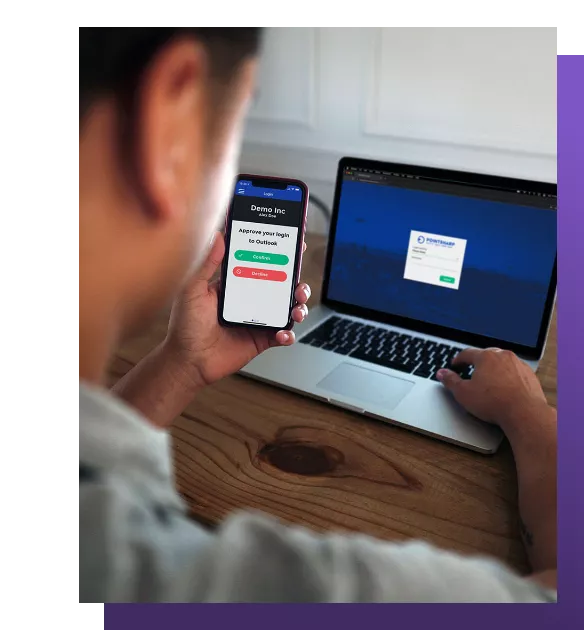Evolving phishing attacks require evolving security strategies
Modern phishing attacks are sophisticated, targeted, and automated, increasingly able to bypass traditional security mechanisms. However, modern cybersecurity can protect your organization better than ever. Additionally, in the event of a successful incident, it can drastically minimize its impact.
Cybercriminals exploit social engineering, fake login pages, and compromised cloud services to steal credentials. Organizations with complex IT infrastructures are particularly vulnerable because a single successful phishing attack can have severe consequences. Therefore, it is essential to continuously adapt your security posture.
This article explores the latest phishing threats and highlights the technologies that provide effective protection today.
How phishing targets organizations
Gone are the days of poorly written, mass-mailed phishing attempts. Today’s attacks are often customized and difficult to detect.
Spear phishing: highly personalized attacks
Spear phishing targets specific individuals or departments with tailored messages. Attackers gather background information to craft convincing scenarios designed to create urgency and lower skepticism, a classic social engineering tactic.
Key techniques include:
- Legitimate-looking sender addresses that mimic colleagues or business partners
- Context-relevant content that references real projects or internal procedures.
- Well-written emails, free of obvious errors and crafted professionally.
Due to their personalized nature, these emails often bypass traditional email filters.
Credential harvesting: fake logins to capture data
Credential harvesting deceives employees into visiting fraudulent login pages, where they unknowingly provide their credentials.
Tactics include:
- Convincing replicas. Such as login portals (such as Microsoft 365, Google Workspace, internal systems).
- Manipulated URLs. Appear legitimate at first glance (such as “micros0ft.com” instead of “microsoft.com”).
- No malware required. Users unknowingly enter their data themselves, unaware of the deception.
Without additional layers such as multi-factor authentication (MFA), attackers can easily exploit these stolen credentials to penetrate deeper into corporate networks.
Business email compromise (BEC): CEO fraud and manipulated emails
In BEC attacks, cybercriminals hijack internal email communications to deceive employees into transferring funds or revealing sensitive information.
Common tactics include:
- Fake messages from executives requesting urgent wire transfers.
- Compromised corporate email accounts used to send messages that appear legitimate.
- Time constraints to hurry recipients into action (“This needs to be done immediately!”)
These attacks can lead to substantial financial losses, especially for companies engaged in international operations and large-scale financial transactions. Targeted employee awareness is essential for early detection.
Multi-vector attacks
Phishing is no longer limited to email. Multi-vector attacks combine various communication channels to enhance success rates, including:
- Smishing refers to fraudulent SMS messages containing malicious links or fake security alerts.
- Vishing refers to phone calls from impersonated IT staff requesting credentials.
- Social media scams: fake LinkedIn or Facebook profiles impersonating colleagues or partners
As companies grow increasingly connected, attackers find more entry points. Without a comprehensive security strategy that addresses multiple threat vectors, organizations remain vulnerable.
Traditional defenses and their limitations
Many organizations already depend on widely used anti-phishing tools like:
- Strong passwords and password managers to prevent account takeovers
- Email filters that detect and block known phishing patterns
- Anti-malware tools designed to catch malicious attachments and links.
While these foundations are important, they are no longer sufficient. Sophisticated attackers employ stolen credentials, hijacked legitimate accounts, and innovative techniques that bypass traditional filters.
A more advanced security approach is now necessary.
What works today: modern strategies for effective protection
Effective phishing defense today relies on modern authentication and access management technologies. Here are four essential tactics that every organization should adopt:
MFA involves several verification steps during login, greatly lowering the risk associated with stolen passwords.
However, not all MFAs are created equal:
- SMS-based MFA is vulnerable. While authentication apps, FIDO, smartcards, and hardware tokens like YubiKeys offer significantly better protection.
- Ease of use is important. Combining multifactor authentication (MFA) with single sign-on (SSO) improves user compliance and simplifies access to multiple applications.
A comprehensive MFA solution strikes a balance between security and user experience.
Fewer passwords mean fewer risks. Technologies such as Passkeys, FIDO2, and biometric authentication eliminate vulnerabilities related to passwords and render phishing virtually ineffective.
No defense is perfect, but structured access management and a zero-trust strategy can limit damage:
Whenever data is exchanged, there is a risk of interception. Businesses must ensure secure communication:
Human defense: training and transparency
Even the best infrastructure will not help if employees are not informed. Humans remain the most common entry point, but with training, they can become a powerful line of defense.
- Awareness training assists staff in recognizing suspicious emails, counterfeit login pages, and social engineering tactics, empowering them to identify and prevent potential threats.
- Simulated phishing campaigns reveal vulnerabilities and foster awareness in real-world conditions.
- An open reporting culture encourages employees to report suspicious activity, even if they have become victims, without fear of blame.
The ultimate goal is that, even if a phishing attempt succeeds, robust systems and educated users can minimize the damage.
Why now is the time to act
Phishing threats are continually evolving, so your security strategy must adapt accordingly. Relying on traditional defenses is no longer enough. Organizations that implement MFA, passwordless login, granular access controls, and secure communication significantly reduce their risk.
Modern security is more than just defense; it serves as a foundation for compliance, resilience, and trust in your digital infrastructure.
Are your defenses up to date?
Now is the time to rethink your strategy.
Resources Learn more about our solutions, us, and how we can help you.
Support Get help with our products and solutions.







